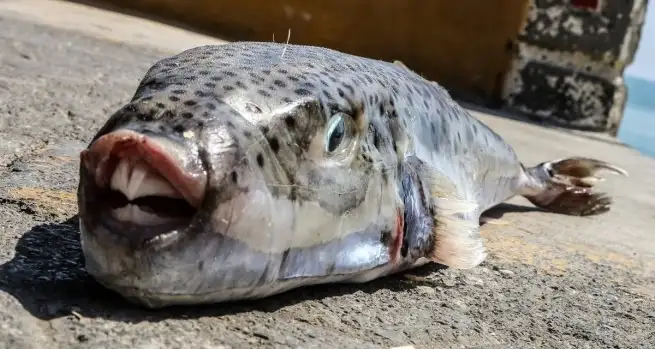El Merayqeb beach in Menzel TEMIME, in the Nabeul region, was recently the scene of the presence of a large number of toxic lapfine fish, which represent a danger to human life in the event of consumption.
On August 9, the Menzel Temime environmental association received a report from a leisure fishing licensee, confirming the abundant presence of this type of fish on the beach, said the president of the association Aymen Hammam.
In a declaration at Mosaic FM, Hammam said this Tuesday that work is underway to identify the areas where this fish appears in the Cape Bon region. In addition, a partnership has been established with the association “Tun SEA” in order to raise awareness of the risks linked to the consumption of this fish, especially after numerous calls from citizens ignoring the dangerousness of this species which harms the ecosystem because it is toxic and reproduces quickly.
For his part, Mohamed Hammam, holder of a recreational fishing license, said he was surprised in recent days by the discovery of a large quantity of lapine fish, expressing his concern in the face of their proliferation on the beach of El Merayqeb in Menzel Temime, which threatens the livelihoods of local fishermen.
The expert in marine biology and president of the association “Tun Sea”, Yassine Ramzi Seghir, explained, for his part, that the massive presence of the lap fish on the Tunisian coast during this period is predictable, since it has already been observed in Libya and Malta. The increase in sea temperatures promotes its arrival in the western Mediterranean basin. He warned the fishermen, in particular those practicing leisure fishing, against the consumption of this toxic fish and invited them to immediately report any observation.
A dangerous fish whose toxin does not disappear when cooking
The expert pointed out that the main danger of the lap fish concerns its consumption, because its toxins cannot be eliminated by cooking, which can lead to death. According to some reports, this species would have caused around 20 deaths in the Mediterranean countries, due to the toxins it secretes, causing paralysis and then death.
He added that for several decades, the Mediterranean has known the appearance of invasive species such as certain fish, seaweeds and marine plants. For example, the blue crab, which appeared in Tunisia, was valued by the authorities through the creation of specialized processing plants, allowing its export outside the country.
THE lap fish (in English, rabbitfish) is a marine fish belonging to the Siganidae family. Here are some key characteristics to better understand this fish:
- Appearance : It has an oval body and laterally compressed, often with various colors and sometimes striped or spotted patterns. His name comes from his slightly rounded head which recalls that of a rabbit.
- Habitat : It is generally found in tropical and subtropical warm waters, especially in the Mediterranean Sea, the Indian Ocean, and the Pacific Ocean. With warming water, he colonized the Mediterranean more and more.
- Behavior : Lapin fish is a herbivore that feeds mainly on algae.
- Danger : This fish is toxic because it has poisonous thorns on its dorsal and anal fins. These thorns can inject a dangerous poison for humans, causing intense pain, paralysis, and in some serious cases, death if the poison is ingested. Cooking does not destroy this toxinwhich makes its consumption very risky.
- Environmental impact : It is considered an invasive species in certain regions, because it reproduces quickly and can disrupt local ecosystems.








